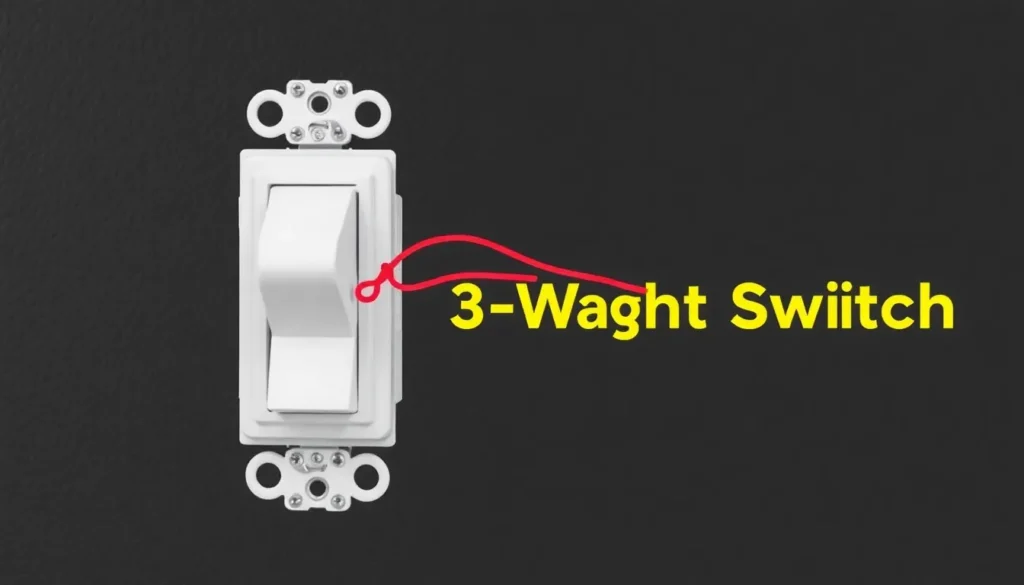Guide to Wiring a 3-Way Light Switch

Are you looking to enhance your home lighting by installing a 3-way light switch? This project, while it might seem daunting at first, can be completed in a single day with the right guidance and materials. Let’s dive into everything you need to know about wiring a 3-way switch effectively, ensuring you can illuminate your space from multiple points.
3-way switches are essential in homes where light control is desired from two different locations, such as at the top and bottom of a staircase or at either end of a long hallway. Unlike standard light switches that control lights from one position, 3-way switches allow for more flexibility and convenience in your lighting setup.
Understanding the Function of 3-Way Switches
A 3-way switch system involves two switches that control the same light or group of lights. This setup is particularly useful in large rooms or areas with multiple entry points. Here’s how it works:
- Power enters the first switch and is then sent to the second switch via two wires called "travelers."
- When you toggle either switch, it changes the state of the light (on or off).
- The configuration allows for seamless control of lighting without needing to walk back to a single switch.
Materials You Will Need
Before starting your project, gather the following materials:
- 14-2 nonmetallic-sheathed cable (Type NM-B)
- 14-3 nonmetallic-sheathed cable (Type NM-B)
- 6-inch copper pigtails
- Electrical tape
- Light fixture
- Two 3-way switches
- Wire nuts for connections
Step-by-Step Guide to Wiring a 3-Way Switch
This project can be accomplished in several straightforward steps. Follow this guide for a safe and efficient installation:
Step 1: Safety First - Turn Off the Breaker
- Start by using a non-contact voltage tester on a known live circuit to ensure it’s functioning.
- Locate the breaker that controls your light circuit and turn it off.
- Confirm the power is off using your tester before proceeding.
Step 2: Pull Cables to the Boxes and Light Fixture
- Run a 14-2 NM-B cable from your power supply to the first switch location.
- Next, run a 14-3 NM-B cable from the first switch to the second switch.
- Then, run another 14-2 NM-B cable from the second switch to the light fixture.
Safety note: Ensure that your circuit breaker is rated for 15 amps; otherwise, use 12-2 and 12-3 NM-B cables for a 20-amp breaker.
Step 3: Prepare the Wires
- Carefully remove a few inches of the outer cable sheathing with a utility knife.
- Strip approximately 3/4-inch of insulation from each conductor using wire strippers.
- Cut a few 6-inch lengths of bare copper wire for grounding pigtails.
Step 4: Wiring the First Switch
- Connect the two bare ground wires from the cables to a copper pigtail and secure it to the green ground screw.
- Join the two white (neutral) wires together. Do not attach them to the switch.
- Connect the black wire from the power supply cable to the black (common) screw of the switch.
- Attach the traveler wires (black and red) from the 14-3 cable to the brass screws on the switch.
- Secure the switch in place and cover exposed terminals with electrical tape.
Step 5: Wiring the Second Switch
- Splice the bare ground wires to a copper pigtail and attach it to the green screw.
- Connect the two neutral wires together, leaving them unattached to the switch.
- Connect the black wire from the 14-2 cable leading to the light fixture to the black (common) screw of the switch.
- Attach the black and red traveler wires from the 14-3 cable to either of the brass traveler screws.
- Wrap the switch with electrical tape and install it into the wall box.
Step 6: Wiring the Light Fixture
- Connect the bare copper ground wire to the green ground screw on the light fixture.
- Join the white neutral wire from the cable to the white neutral on the light fixture.
- Connect the black wire from the cable to the black wire on the light fixture.
- Secure the light fixture in place.
Step 7: Final Checks and Testing
- Ensure both switches are securely fastened to their boxes.
- Turn the breaker back on.
- Test the light by toggling the switches. If the light does not work, turn off the power and check your connections.
Understanding Common Issues and Their Solutions
Even with careful installation, issues can arise. Here are some common problems:
- Light not turning on: Double-check that all connections are tight and that the traveler wires are connected correctly.
- Switch feels hot: This could indicate a wiring issue. Turn off the power and check your connections immediately.
- Intermittent light operation: This may indicate a loose connection. Inspect all wire nuts and terminals.
Frequently Asked Questions
What is the primary function of a 3-way switch?
A 3-way switch allows control of a light fixture from two separate locations, enhancing convenience in areas like hallways and staircases.
Where should 3-way switches be installed?
Consider using 3-way switches in settings where you have two access points to a room, such as:
- At the top and bottom of a staircase
- In long hallways
- In large rooms with multiple entrances, like living rooms or basements
How does a 3-way switch differ from a single-pole switch?
A single-pole switch controls a light from one location, while a 3-way switch allows for control from two locations with additional wiring to connect them.
Can a 3-way switch be used like a regular switch?
Yes, a 3-way switch can operate like a standard switch by using just one traveler terminal and the common terminal. However, this configuration might be unnecessarily complex.
For a visual guide on wiring a 3-way switch, you can check out this helpful video:
You may be interested in these other articles: How to Choose the Right Professional for Popcorn Ceiling Removal
How to Choose the Right Professional for Popcorn Ceiling Removal Top family vacation spots to visit in 2025
Top family vacation spots to visit in 2025 Barbra Streisand's fabulous houses reflect her iconic style
Barbra Streisand's fabulous houses reflect her iconic style Stylish Pembrokeshire getaway: beautiful interiors and nature
Stylish Pembrokeshire getaway: beautiful interiors and nature What the world’s most desirable gardens all have in common
What the world’s most desirable gardens all have in commonIf you want to know more about similar articles like Guide to Wiring a 3-Way Light Switch you can visit category Landscaping.